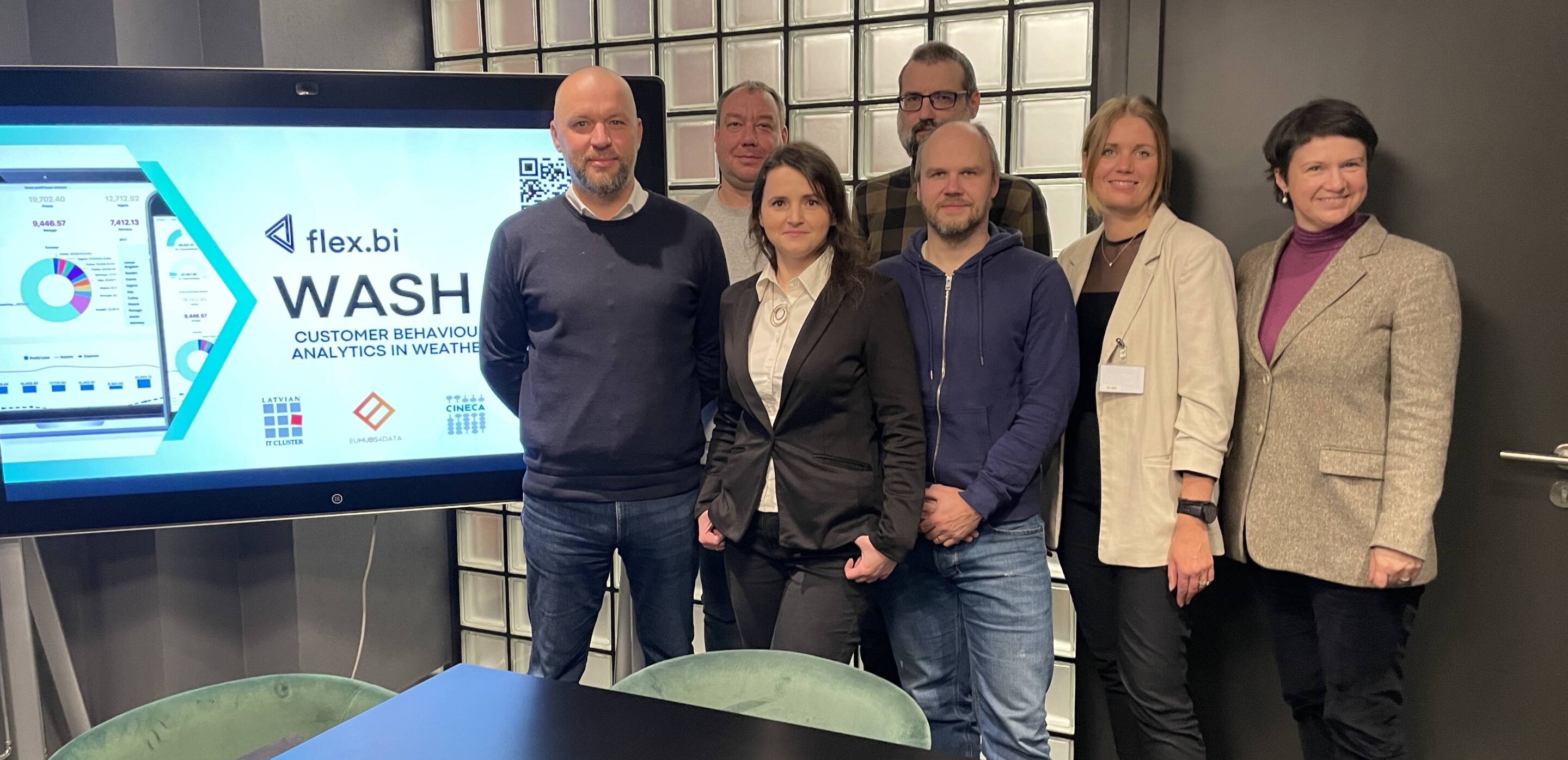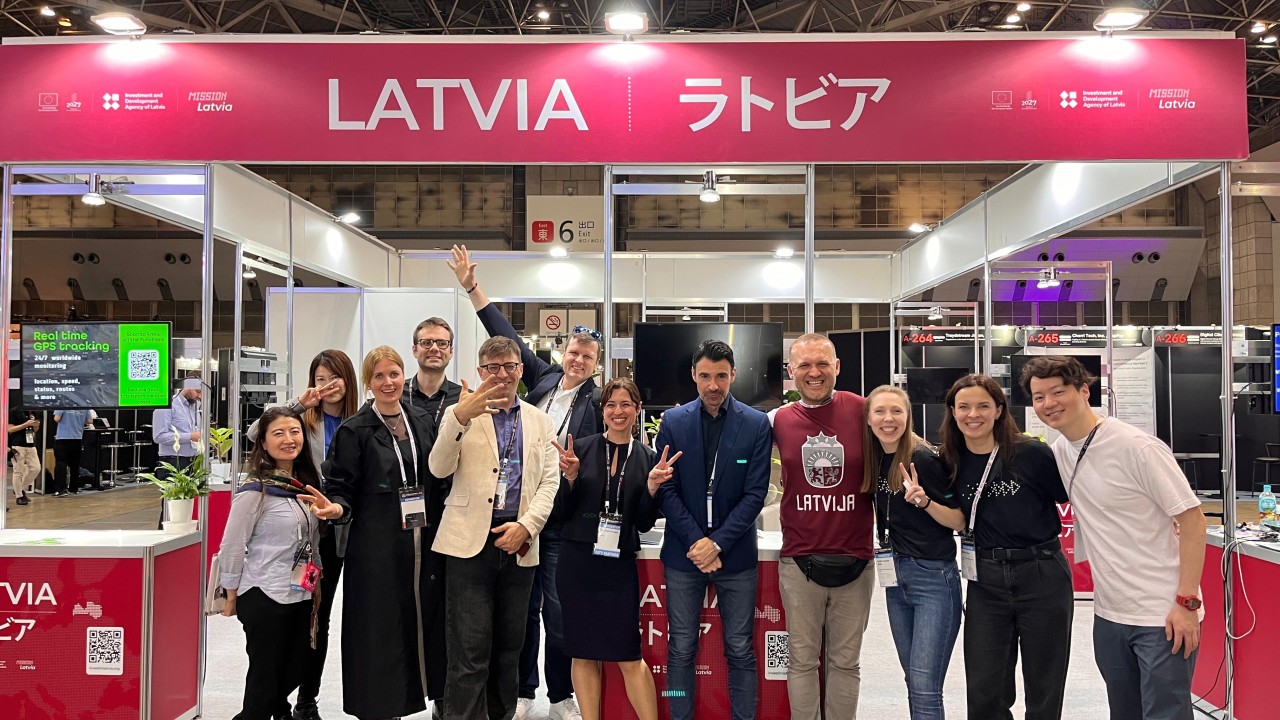For flex.bi, accepting EUHubs4Data’s challenge meant jumping into the completely unknown world of machine learning and artificial intelligence. Thanks to professional mentors, responsive cooperation partners and hard work, the company has created a new product that will help companies in various industries understand the relationship between weather conditions and customer activity, as well as predict future revenues and customer flow. More about the WashAI project and its results in a conversation with flex.bi CEO Dace Kvalberga.
Author: Lasma Druke, itbaltic.com
What is the story of your project?
The WASHAI project was about offering small and medium-sized customers technologies that are not so easy to access and integrate them into the flex.bi data analytics platform in a simple, convenient and understandable way. The target audience of the project was initially the self-service industry, and our cooperation partner within the framework of this project was PUTO AS, which provides self-service car washes. We accepted the challenge of assisting this specific self-service industry.
After conducting an analysis of business requirements, we concluded that the most difficult problem is the analysis of customer flow, the formation of a customer profile, as well as the analysis of customer habits depending on the weather. Weather impact analysis is made difficult by the fact that weather information is not available in financial analysis systems, moreover the relationships are complex, so there is no convenient tool to predict results in the context of the weather, as well as to analyse and explain historical results.
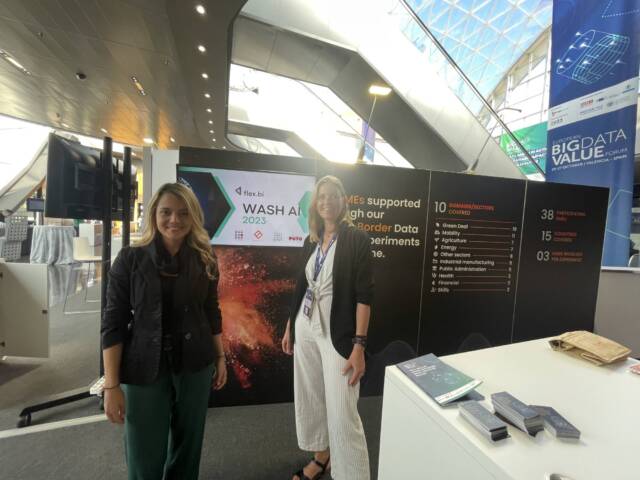
The second problem that emerged clearly is that for the analysis of customer flow, information about the number of transactions made by customers from the equipment is not enough; it is important how many customers have made these transactions. The specifics of self-service also make it difficult to create a customer profile, since no one meets the real client. The gender of the visitor, their age, and the make of their car is unknown. Without the ability to clearly see the key performance indicators for the industry, planning is difficult and challenging for the company’s management, so we used various tools to collect, process and combine the missing data to form an overview of what is important for the company from all these aspects.
The EUHubs4Data project provided an opportunity to test machine learning and artificial intelligence (AI) technologies, including visual sensor solutions, combining the knowledge of cooperation partners from Latvia and Italy to solve these problems. Project was presented also in Big Data Value Conference in Valencia as part of EUHUBS4Data data initiative, together with 29 projects selected worldwide. https://euhubs4data.eu/experiments/wash-ai/
What is the result of project?
The end result is a comprehensive AI data analytics solution tailored to the customer’s needs, based on flex.bi’s platform. This solution collects customer-critical data from a variety of data sources, including accounting systems and self-service equipment. This data is enriched with historical weather information at specific equipment locations, as well as weather forecasts for the coming days. We used sensors equipped with AI technology to help track customer flow as well as determine customer profile in the context of age and gender. And machine learning models allowed us to predict customer flow and turnover with sufficient accuracy, depending on the weather forecast for the coming days and other additional factors.

The customer uses this solution in the form of dynamic reports and dashboards, which helps to quickly make data-based decisions, as well as to substantiate the results already achieved with facts. We used sensors equipped with AI technology to help track customer flow as well as determine customer profile in the context of age and gender. Machine learning models, on the other hand, allowed us to predict customer flow and turnover with sufficient accuracy depending on the weather forecast for the coming days and other additional factors. The predictive accuracy of the machine learning models developed within the framework of the project is about 85%, and with a larger dataset used for initial training, even more accurate results could be obtained. No less important is the forecasted customer flow component, as it provides an opportunity to assess when to best carry out maintenance and repair work on equipment.
In this project, it was important to provide reports that reflect the company’s results in an easy-to-understand way with all the context necessary for management to successfully explain and follow up on operational activities and plan the next steps. At the moment, we see that the developed solution can be used in any industry whose performance is affected by weather conditions, and we also offer it to other customers in the retail, transport and tourism sectors.
What role do the machine learning and AI components play in the project?
Technology offers opportunities that traditional methods do not – it would take a lot of time, or it would not be possible at all. Today, counting and profiling people by putting ticks on a sheet of paper is not useful – the results must be dynamic and visible online. Solving the data analysis problems of companies, finding answers to certain questions is crucial – this requires collecting data from both equipment and systems, and we should not be afraid of this.
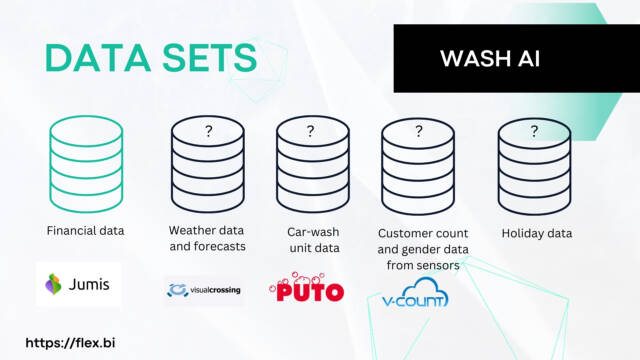
As part of the project, it was necessary to develop a pilot version of the solution, the main goal of which was to demonstrate that AI technologies can solve specific tasks in a qualitative and effective way.
AI visual sensors were installed at one test station, and the results were calibrated to achieve maximum accuracy. The main contribution of sensors is providing an in-depth understanding of customers and their habits, as well as automating the gathering of this information. The developed forecast models were tested in the context of various indicators and different datasets in order to understand the meaning of the application of machine-learning, not only in predicting the exact result, but also explaining the operational principles of the algorithm and the key factors involved. While the relationships that a machine learning algorithm is capable of seeing are understandable to the human mind, they are difficult for us to fully grasp.
We have presented the solution and the results to the customer in the context of its business, and now the client can assess whether to expand this solution by installing additional sensors at other stations.
What has the project brought to the flex.bi team?
This project gave us the freedom to experiment. For us, this was a completely new direction, as our customers are mostly small and medium enterprises which cannot afford to invest time and money in solutions as innovative as artificial intelligence and machine learning. Unless the customer is a new company that starts working with equipment in which various sensors are already built in, such an addition is very expensive for them. In total, within the framework of this project, we received support in the amount of 60,000 EUR, which allowed us to invest a lot of time in the growth of both us and our client.
During the project, we learned the basics of machine learning and related opportunities together with experts provided to us by our mentor, Latvian IT Cluster. We enjoyed very good cooperation with Professor Inese Poļaka of Riga Technical University, who specializes in machine learning. Inese helped us understand the machine learning models, which were developed in cooperation with our partner CINECA from Italy, and transfer the knowledge gained to the real solution for the client, automating the extraction of results. We also gained in-depth insights into GDPR-related issues, as this project is related to sensitive data.
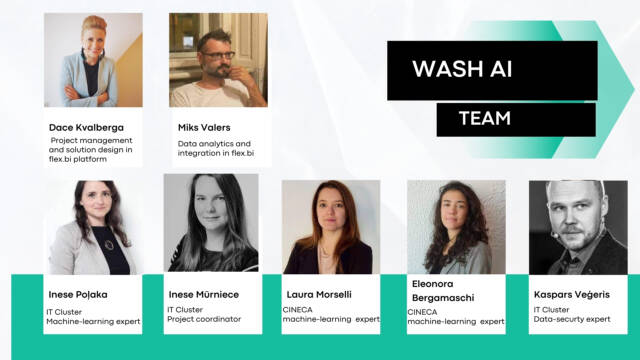
Many thanks to the project team: Miks Valers, Inesei Poļaka, Inese Mūrniece, Kaspars Veģeris, Laura Moriselli and Eleonora Bergamaschi,[PB1] who worked tirelessly throughout the 9 months.What are the main lessons learned?
One of the main lessons is that it is important to choose reliable partners who are willing and able to` work dynamically in order to jointly implement the project in the best possible way.
Our project was complex because it involved five partners: Latvian IT Cluster, EUHubs4Data, Cineca, PUTO and TD Trusted Decisions. During the project, there were difficulties with the provision of AI sensors – for various technical reasons, the installation of sensors was delayed, and the problems were not solved quickly enough. Although sensors were only one part of the overall project, all components are important in the ultimate solution, so even a supposedly slight delay by one partner significantly affects the overall project execution.
On the other hand, our cooperation with the expert brought in by the Latvian IT cluster, RTU Professor Inese Poļaka, was a success. She not only helped us learn the basics of machine learning, but also engaged in communication with the digital innovation centre Cineca, which was also a very diligent partner. I am very pleased with the choice of these partners because our successful cooperation allowed us to complete the project task related to the development of machine learning models in a timely manner.
What advice would you give to other companies wishing to apply for such invitations?
I would recommend that you carefully study the requirements and milestones of the project. Initially, we had a major discussion with the EUHUBS4DATA monitoring team about the milestones that the project should achieve. There were a lot of unknowns at the time, but it was necessary to say what you would achieve in the end. We had to agree on this when concluding the contract, at the very beginning of the project. For example, we did not yet know what the accuracy of machine learning was, but we had to learn and understand what we could promise. The reference points must be measurable, this must be approached scrupulously, but at the same time you must be careful that they can be achieved. It is also not necessary to lower them too much, because then they will not be interesting.
My team and I had many, many discussions. I recommend discussing and evaluating issues to make execution easier for yourself. The experiment remains an experiment, and we managed to achieve the accuracy and the planned result, but if the indicators were higher, there would be a question of what to do, since this specific pilot project included objective limitations due to the amount of data. Likewise, the integration of data in the matter of automation was under the influence of circumstances beyond our control, which could change and delay the result of the project. Of course, you can’t predict everything, but it is necessary to model the planned process in detail and regularly so that there are no surprises.
How do you assess the project as a whole?
I think the project has been a success because we have gained new knowledge and experience in the fields of artificial intelligence and machine learning that we might not have been able to address otherwise. As the main successes, I would like to highlight customer satisfaction with the solution, new knowledge gained by the team, inspiring cooperation with specialists and mentors, unique experience and renewed confidence that modern technologies such as AI and machine learning can also be useful to customers in our sector.
In my opinion, this project is a very valuable incubator where you can try out your ideas in a free form, because after all, the project organizers themselves call it an “experiment”.
The EUHubs4Data project has received funding from the European Union’s Horizon 2020 Research and Innovation Programme. Contract No. 951771. The views and opinions expressed in the article are those of the author(s) only and do not necessarily reflect those of the European Union or the European Commission. They are not the responsibility of the European Union or the European Commission.
